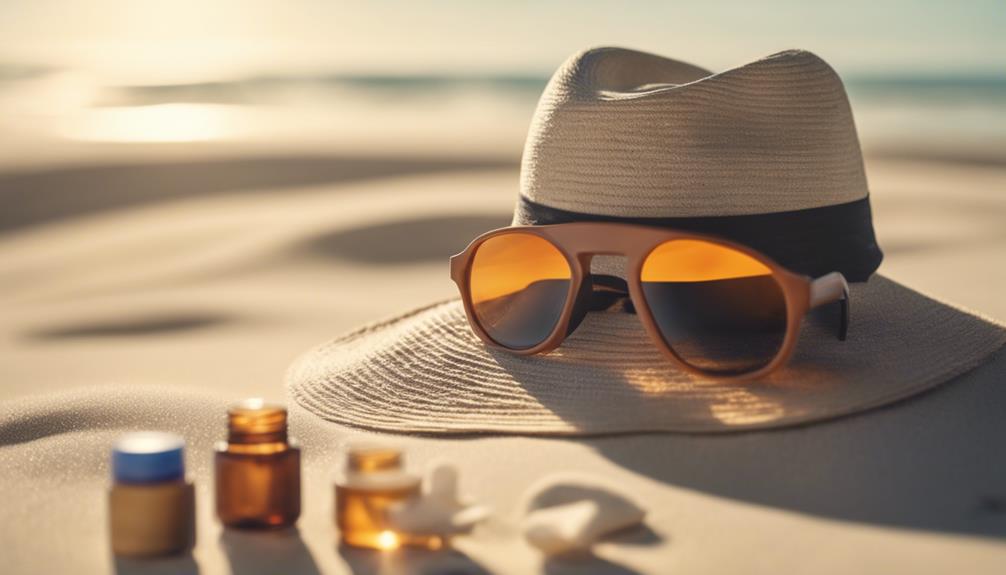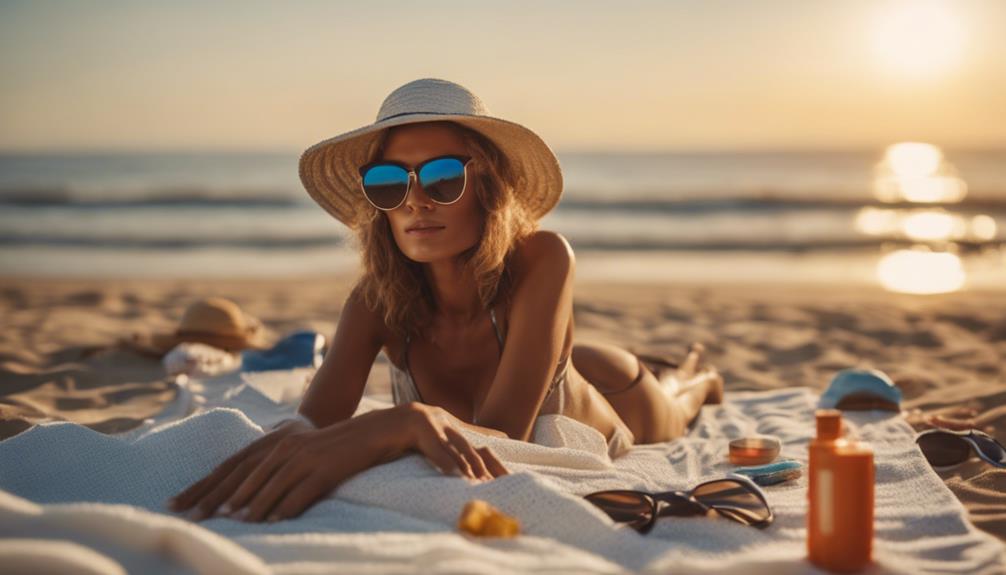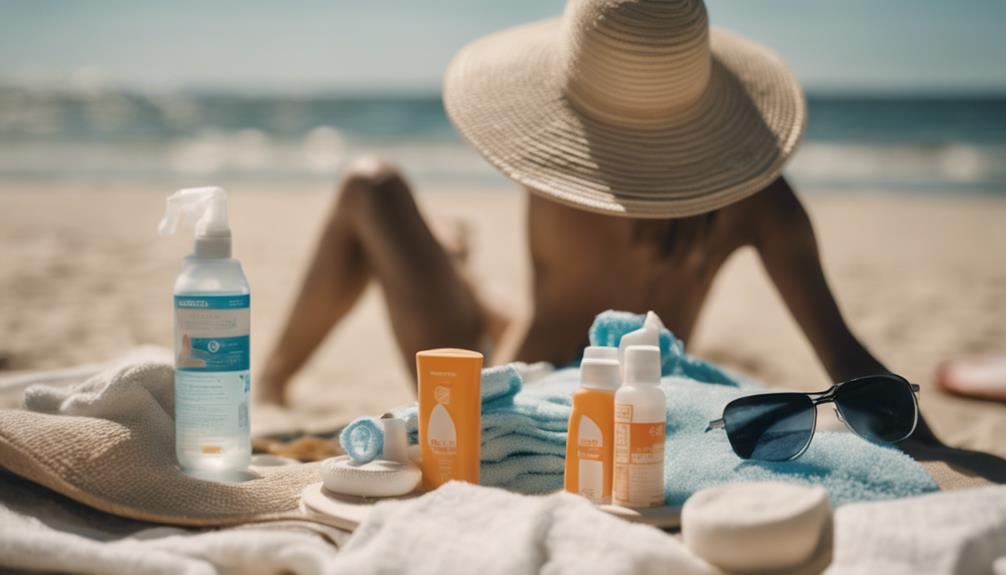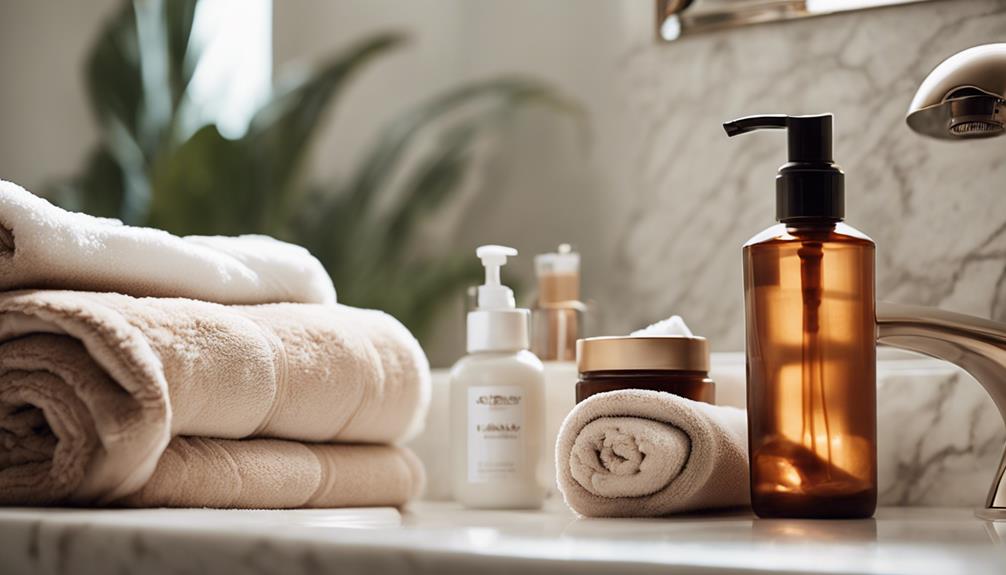Prioritizing eye safety during tanning is crucial to prevent long-term damage from harmful UV radiation. It is important to always wear protective eyewear, such as UV-blocking goggles, to protect your eyes from UVA and UVB rays. Make sure to familiarize yourself with salon safety protocols and comply with any age restrictions. After tanning, using high-quality moisturizers and bronzer lotions with natural ingredients will help maintain skin health. Additionally, limiting your tanning time can help minimize cumulative UV damage, and regular eye exams are essential to monitor any changes. For further tips on enhancing your tanning experience while safeguarding your vision, there are more important tips to consider.
Key Takeaways
- Always wear UV-blocking protective goggles during tanning sessions to safeguard your eyes from harmful UV radiation.
- Choose tanning salons that prioritize safety protocols, including compliance with age restrictions and regular equipment maintenance.
- Use bronzer lotions and moisturizers with natural ingredients to promote skin hydration and reduce irritation during tanning.
- Limit your tanning exposure time to minimize cumulative UV damage and reduce the risk of long-term eye conditions.
Importance of Protective Eyewear
The importance of protective eyewear in tanning beds cannot be overstated, as it serves as an essential barrier against the harmful effects of UV radiation on the delicate structures of the eye.
Prolonged exposure to ultraviolet rays can lead to serious conditions, including cataracts, retinal damage, and photokeratitis. Wearing protective goggles guarantees that the eyes remain shielded from these risks, acting as the first line of defense during tanning sessions.
It is advisable to have multiple pairs of goggles available, especially for spontaneous visits to tanning salons. Additionally, wearing sunglasses after tanning further enhances protection against residual UV rays.
Prioritizing eye safety not only safeguards visual health but also promotes a responsible approach to tanning practices overall.
Salon Safety Guidelines
Understanding and adhering to salon safety guidelines is essential for ensuring both skin and eye health during tanning sessions.
Clients should familiarize themselves with the specific protocols established by the salon, which often include wearing protective goggles to block harmful UV rays.
Consulting with tanning professionals is important; they can provide personalized advice based on individual skin types and tanning goals.
Additionally, it is critical to comply with age restrictions, as they are enforced for health and legal reasons.
Regular cleaning and maintenance of tanning equipment also contribute to a safe environment.
Choosing the Right Products

Selecting the right tanning products is essential for achieving ideal results while ensuring skin hydration and minimizing irritation. The choices you make directly impact both the effectiveness of your tan and the health of your skin.
Consider the following when selecting products:
- Bronzer Lotions: Opt for bronzers that contain natural ingredients to promote skin hydration and reduce the risk of irritation.
- Moisturizers: Use a quality moisturizer before and after tanning sessions to maintain skin elasticity and hydration, enhancing the overall tanning experience.
- SPF Protection: Incorporate a broad-spectrum sunscreen for any exposed skin to shield against harmful UV rays, even during tanning sessions.
Understanding UV Exposure
Awareness of ultraviolet (UV) exposure is essential for making informed decisions about tanning practices and protecting overall skin and eye health.
UV radiation comprises UVA and UVB rays, each posing distinct risks. UVA rays penetrate deeply, leading to skin aging and increasing the risk of skin cancer, while UVB rays primarily cause sunburn and contribute to skin damage.
Both types of radiation can severely impact eye health, leading to conditions such as cataracts and photokeratitis. Understanding the intensity of UV exposure, which varies by time of day, season, and geographical location, is vital.
Individuals must also recognize that artificial tanning methods, such as tanning beds, emit concentrated UV radiation, necessitating protective measures to shield the eyes from potential harm during these sessions.
Long-Term Eye Health Considerations

Protecting eye health during tanning is essential, as prolonged exposure to UV radiation can lead to serious long-term conditions, including cataracts and macular degeneration.
To safeguard your vision, consider the following:
- Use Protective Eyewear: Always wear UV-blocking goggles specifically designed for tanning to shield your eyes from harmful rays.
- Limit Exposure: Adhere to recommended tanning times and frequencies to minimize cumulative UV exposure and reduce the risk of eye damage.
- Regular Eye Exams: Schedule routine eye check-ups with an eye care professional to monitor any changes in vision and detect early signs of UV-related conditions.
Are the Tips for Eye Protection in Tanning Different from Regular Tanning Eye Safety?
When it comes to essential eye protection tips in tanning, the same principles apply as with regular tanning eye safety. It’s important to wear UV protective eyewear to shield your eyes from harmful rays. Whether in a typical tanning bed or outdoors, protecting your eyes is crucial for overall safety.
Conclusion
In summary, prioritizing eye safety during tanning is vital to preventing serious conditions such as cataracts, which affect nearly 24 million Americans aged 40 and older.
By adhering to essential practices such as wearing protective eyewear, following salon safety guidelines, and selecting appropriate products, individuals can greatly mitigate the risks associated with UV exposure.
Awareness and diligence in these areas are paramount for ensuring long-term eye health while still enjoying the aesthetic benefits of tanning.










